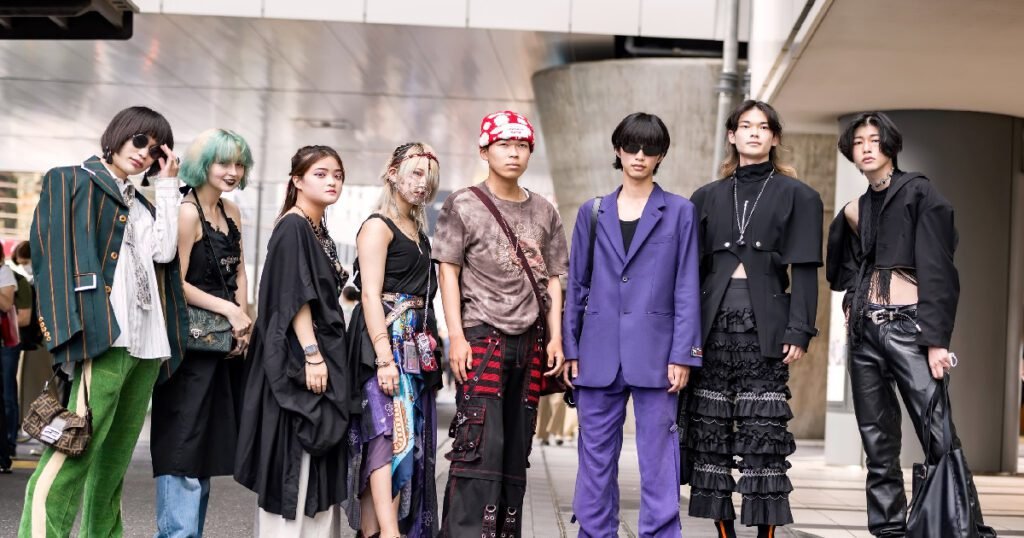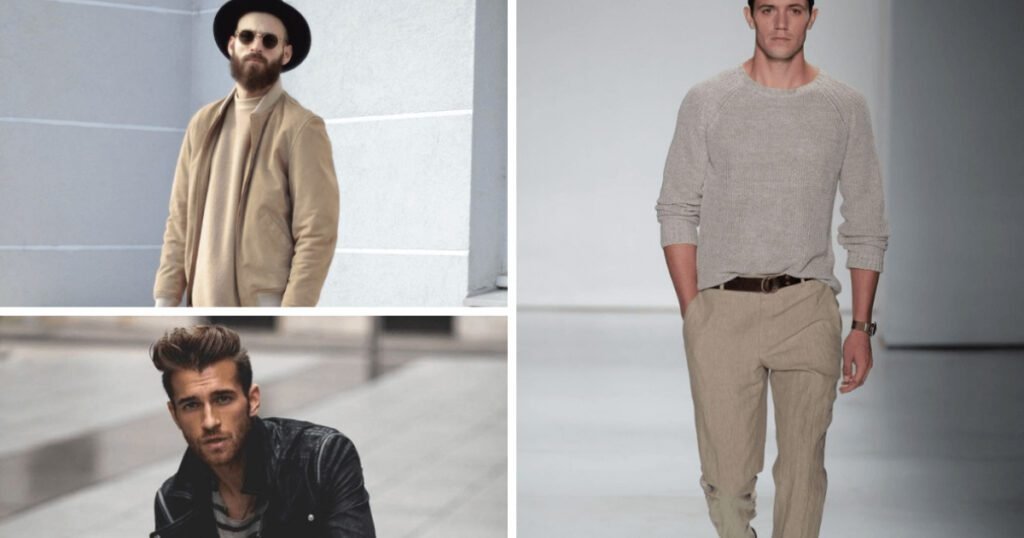1. Introduction
Japanese fashion is an exciting fusion of history and contemporary fashion, greatly influencing global trends in all walks of life. Japanese fashion styles combine the timeless grace found in kimonos with edginess derived from Tokyo street style, making them substantial. In this guide, we will look at Japanese Fashion and its storied history, from its most famous designers to trends surrounding it, while also looking forward to the future.
2. A HISTORY OF JAPANESE FASHION
Kimono, Yukata
Kimono: A T-shaped, wrapped-front garment with square sleeves and a body-length outfit that ties at the waist on both sides. Because kimonos are made of silk and have the most complex patterns, a kimono is not just an article of clothing but an armory against art. During the festival, you would wear a cotton yukata or summer kimono.
Impact of Western Fashion
Japanese fashion underwent many changes as Western styles replaced traditional Japanese attire following the Meiji Restoration in the late 19th century. The arrival of Western clothing, such as suits and dresses, gave Japanese fashion a distinct fusion look that combined elements from Eastern and Western styles used by designers today.
3. Key Designers and Brands
Comme des Garçons (Rei Kawakubo)
comme des Garçons is a fashion label created by avant-garde designer Rei Kawakubo. She is famous for presenting designs that often defy traditional beauty standards within the fashion industry. Casts of her work often deconstruct garments, present asymmetric shapes, and are generally monochromatic in tone, making Maddie a leader within the fashion industry.
Issey Miyake
In fashion, Issey Miyake is famous for his clever way of generating clothes through fabric and very high-tech fabrics. With his pleated creations, he has flourished while creating with polyester or recycled fibers – challenging fashion codes by dealing with an intelligent balance between haute couture and artistic talent.
Yohji Yamamoto
In all collections, Yohji Yamamoto is known for oversized silhouettes, draping, and black palletises. His style is characterized by an influence of androgyny, resistance towards traditional fashion norms, and a vital figure for avant-garde Japanese fashion.
Kenzo Takada
Founded by Kenzo Takada, a designer known for his bright and colorful collections that reference culture worldwide, Takada’s fashion combines Japanese aesthetics with global influences, creating a unique and fun style.
4. Fashion Shows and Events
Tokyo Fashion Week
Tokyo Fashion Week is an essential event in the fashion calendar. Many of Japan’s hottest designers (or soon-to-be hot) showcase their lines. It is a medium for new depictions and is the precursor to fashion trends.
Harajuku Fashion Walk
The Harajuku Fashion Walk is held monthly to bring together fans of this unique and very personal style. Tokyo is divided into several sections, one of the most well-known being Harajuku, home to some quite unique-as-a-snowflake Japanese street fashion.
Street Snap Culture
Street snap culture exists in Tokyo, where photographers can capture various new and original styles on the street. Those photos are often published in fashion magazines and sites, extending the creativity of Japanese style.
5. Major Fashion Trends
Kawaii Culture
Kawaii, meaning cute, is a significant theme in Japanese fashion. It emphasizes childlike innocence and playful aesthetics, such as ribbons, lace, and lots of pink, often used in favor of other styles.
Minimalist Aesthetic
Where the kawaii style is bright and full of life, the minimalist aesthetic is all about simplicity and practicality. That is characteristic of this trend, which uses shades like beige, cream, or brown and focuses on clean lines that are perfect for those who value slight elegance.
Streetwear Influence
Japanese streetwear is popular with fans for its cutting-edge designs and international acclaim. Labels like A Bathing Ape (BAPE) and Undercover merge street style and high fashion, creating a graphic visual identity incorporated into an amalgam of soft goods.
Vintage and Thrift Fashion
In Japan, the fashion market for vintage and thrift wear is also increasing, with many (fashion lovers) opting to buy a used item from a classic/vintage store. This increases sustainability, helps fashion feel more like an art of personality, and holds to the constant need for self-expression through what we wear.
6. Style Tips
Related: Style Guide – Bring Traditional Japanese Inspiration Into Your Wardrobe
Dressing with hints of Japanese flair can be a much more exciting form of self-expression. Combine statement pieces such as a kimono jacket or tabi shoes into your daily ensemble.
Combining Modern and Traditional Items
Mixing and matching things from the olden days or more modern items will create a one-of-a-kind outcome in which both sides are equally featured. For instance, pair a red kimono with jeans and a plain white t-shirt into the perfect fashion outfit for a sweater. Weather.
Element of Japanese Fashion and accessories
In Japanese fashion, accessories are essential. For a finishing touch, use items like a furoshiki bag (a Japanese wrapping cloth that can be used for transporting almost anything), geta sandals, or even Japanese-inspired hair accessories.
7. Sustainable Japanese Fashion
Eco-Friendly Brands
Many Japanese fashion brands are sustainable and employ eco-friendly design materials, such as the CHATME line that recycles plastic bottles used in Coca-Cola packaging. Ethical fashion, though, is gaining momentum with People Tree and KAPITAL at its helm.
Lasting Materials and Techniques
The column recommends that Japanese designers teach sustainable materials, including organic cotton, bamboo, and fabric with recycled origins, in their work. These practices are better for the planet and can help shift our focus on how much and what type of clothing we buy.
Preloved & Vintage Fashion
This popularity corresponds to a move toward more sustainable consumption via second-hand and vintage fashion in Japan. Second-hand stores and Vintage Second-Hand Shops can offer a unique selection of good-quality pieces that reduce waste by encouraging the recycling/ up-cycling of clothes.
8. Technology in Fashion
Wearable Technology
The world of Japanese fashion technology is making more giant waves. Wearable tech, including intelligent fabrics or various integrated solutions such as accessories, extends the borders of fashion and functionality. Technologies such as heat-regulating fabrics, culture-illuminated clothing, and many more are.
Innovative Materials
Designers in Japan are established for their use of new materials throughout the board, including high-tech fabrics, animals, or themselves. They assist in improving the performance and the look of accessories and hence rise to a new level in the fashion industry.
Digital Fashion Showcases
The digital fashion showcase boom has also democratized globalization, allowing Japanese designers to be allies. However, with virtual fashion shows and online platforms, artists can still acquire a canvas to express themselves creatively. click here if you want to know about (skin beauty).
9. Celebrity and Cultural Impact
Influences from Japanese Celebrities
Japanese fashion trends are heavily influenced by celebrities such as musicians, actors, and “influencers” in the country. These people stoke fan interest and can push certain brands or trends into the mainstream.
How Anime And Manga Are Helping Shape Fashion
Japanese fashion is greatly influenced by anime and manga, as many designers seek inspiration from these prevalent cultural forms. The attire worn by the characters often becomes famous fashion statements, propelling trends in streetwear and high wear.
Global Cultural Exchange
Global contraction of the fashion world has merged both Japanese and international styles. Whether we like to admit it or not, the success and failures of one culture become its own learning experience that rubs off in another, primarily through fashion.
10. Conclusion
The Fashion Culture: Japanese fashion remains a significant player in the global world of style; we are all aware that The Oriental land is recorded as one country with ground-breaking modernism and creativity mixed up with tradition. As the world is more globalized, Japan is increasingly promoting fashion styles, a new paradigm. It will probably influence designers all over the globe and define new standards of contemporary beauty due to the birth of Japanese creators. (Nurari.com)




